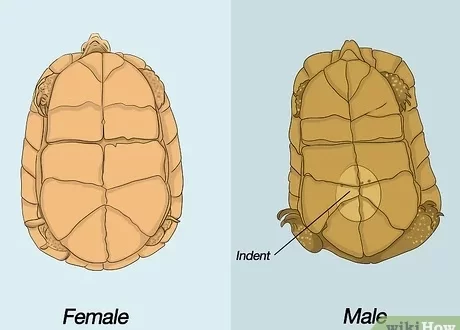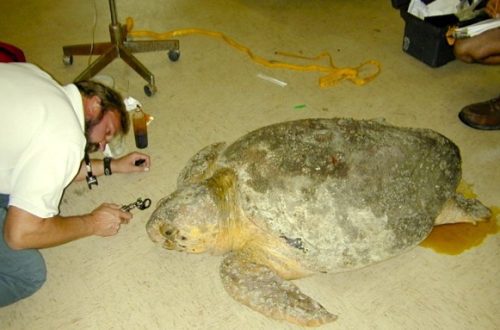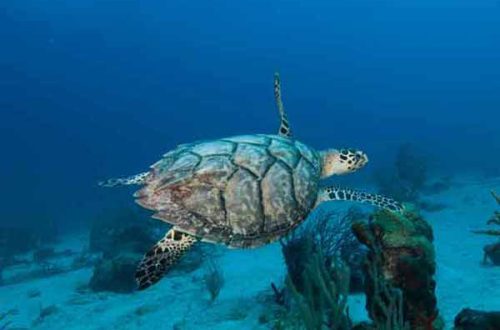
Kedu ihe kpatara nduru ntị na-acha uhie uhie ji na-egwu mmiri "n'otu akụkụ", afọ elu ma ọ bụ azụ azụ
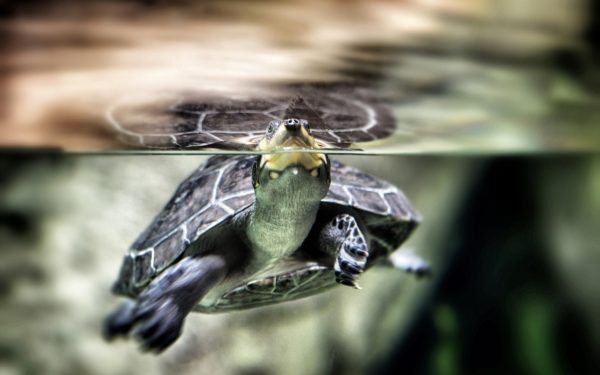
Red-eared turtles have recently become very popular pets. Most sellers, when selling tiny, bright green reptiles, promise buyers that the animals do not require specific care and practically do not get sick. Unfortunately, the lack of proper living conditions and proper nutrition lead to various diseases and death.
Most turtle diseases are manifested by a violation of flotation – (from the French Flottation) the position of the animal’s body on the surface of the water, exotic animals can fall on their side, move with their booty or belly up. Such behavior of an aquatic reptile requires an immediate appeal to a competent herpetologist, self-treatment of a pet is fraught with the death of an exotic pet.
ọdịnaya
Why the red-eared turtle swims incorrectly: on one side, backwards or belly up
During the period of intensive growth, young turtles need proper care and sufficient intake of vitamins and microelements with food, the lack of which leads to a metabolic disorder of a small pet and the development of “dyspnotic syndrome”. “Dyspnotic syndrome” is observed in various pathologies and is manifested by the following characteristic clinical symptoms:
- violation of flotation – an animal turtle swims belly up, sideways or backwards up;
- shortness of breath or the occurrence of noise during breathing – whistles, wheezing, clicks, squeaks;
- complete refusal of food or loss of appetite;
- omume enweghị izu ike;
- achọghị ịnọ n'ime mmiri;
- drowsiness or excessive lethargy;
- bloating of the body;
- lack or violation of defecation.
The reasons for the development of such a clinical picture in waterfowl are most often the following factors:
- improper feeding and lack of vitamin and mineral supplements, which lead to a lack of vitamins A and D, calcium and phosphorus in the body of animals;
- iribiga nri ókè;
- low water and air temperature;
- the presence of soil at the bottom of the aquarium, which turtles can swallow;
- lack of sources of additional and ultraviolet radiation;
- no water purification system.
With one-time hypothermia or stress, a pronounced change in the position of the body of the turtle in the water is never observed. If your favorite reptile swims backwards or sideways, this is already a symptom of a pathology that requires immediate contact with a competent specialist.
In what diseases does the turtle swim sideways, backwards or belly up
A change in the flotation properties of the animal’s body is observed in various diseases of turtles, which develop as a result of a long-term violation of the conditions of keeping and feeding. A roll to one side or a complete turn of the body can be observed both in pathologies of the gastrointestinal tract and in respiratory diseases, therefore, a veterinary specialist or herpetologist should determine the cause of the flotation disorder, make a diagnosis and prescribe the appropriate treatment.
Most often, turtles with flotation disorders are diagnosed with pneumonia without a clinical examination. This is a fundamentally wrong tactic, since a change in the position of the reptile’s body in the water is observed with the following turtle diseases:
- tympania of the stomach;
- bronchus collapse;
- foreign body in the gastrointestinal waste;
- ọrịa oyi;
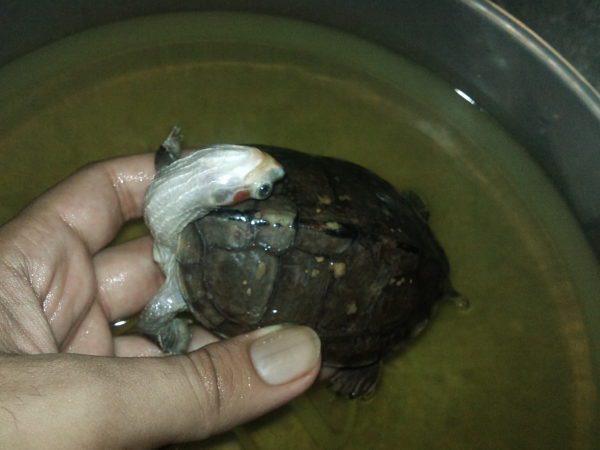
- emphysema or aerophagia when swallowing air;
- rickets.
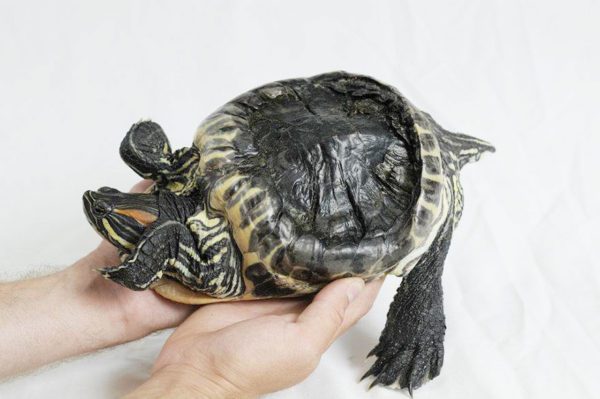
With pneumonia, there is a general violation of buoyancy, that is, the animal drowns. Rolling to the right or swimming up the booty is characteristic of timpania. When falling on the left side, one can assume the valvular effect of the left bronchus, swimming up the belly is characteristic of emphysema or rickets.
Video: turtle falls on its left side when swimming
How to cure a turtle in violation of flotation
In order to find out the reason for the change in flotation properties, specialists should conduct a comprehensive examination with a study of the integrity and hardness of the shell shields, animal reflexes, the presence or absence of edema, shortness of breath and bloating. To clarify the diagnosis, additional examination methods are used: radiography, laboratory diagnostic methods, lung puncture and the introduction of a probe into the stomach. After receiving all the results of the examinations, taking into account the data of the anamnesis, the specialist prescribes the appropriate treatment.
Depending on the identified pathology, the animal is prescribed a correction of the diet and conditions of detention, anti-inflammatory baths, injections of antibacterial, vitamin and immunostimulating agents. The effectiveness of treatment should be monitored by a specialist using laboratory diagnostic methods.
If your red-eared turtle swims strangely, refuses to eat, and makes strange breathing sounds, it is recommended to see a doctor immediately. Under the conditions of feeding and keeping, small reptiles practically do not get sick and delight their owners for quite a long time.
The turtle swims on one side, back or belly up: causes and treatment
4.2 (83.53%) 17 votes





